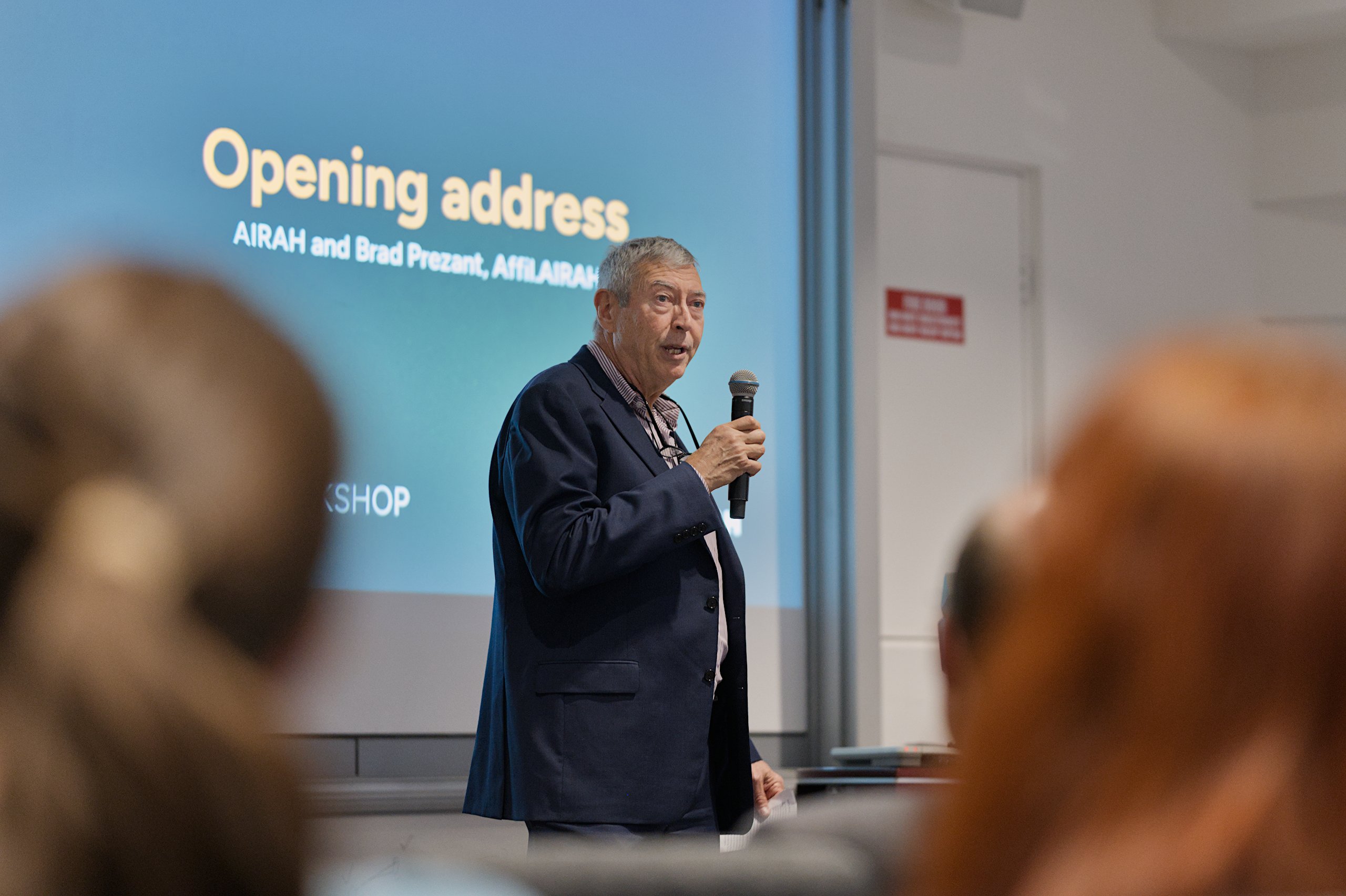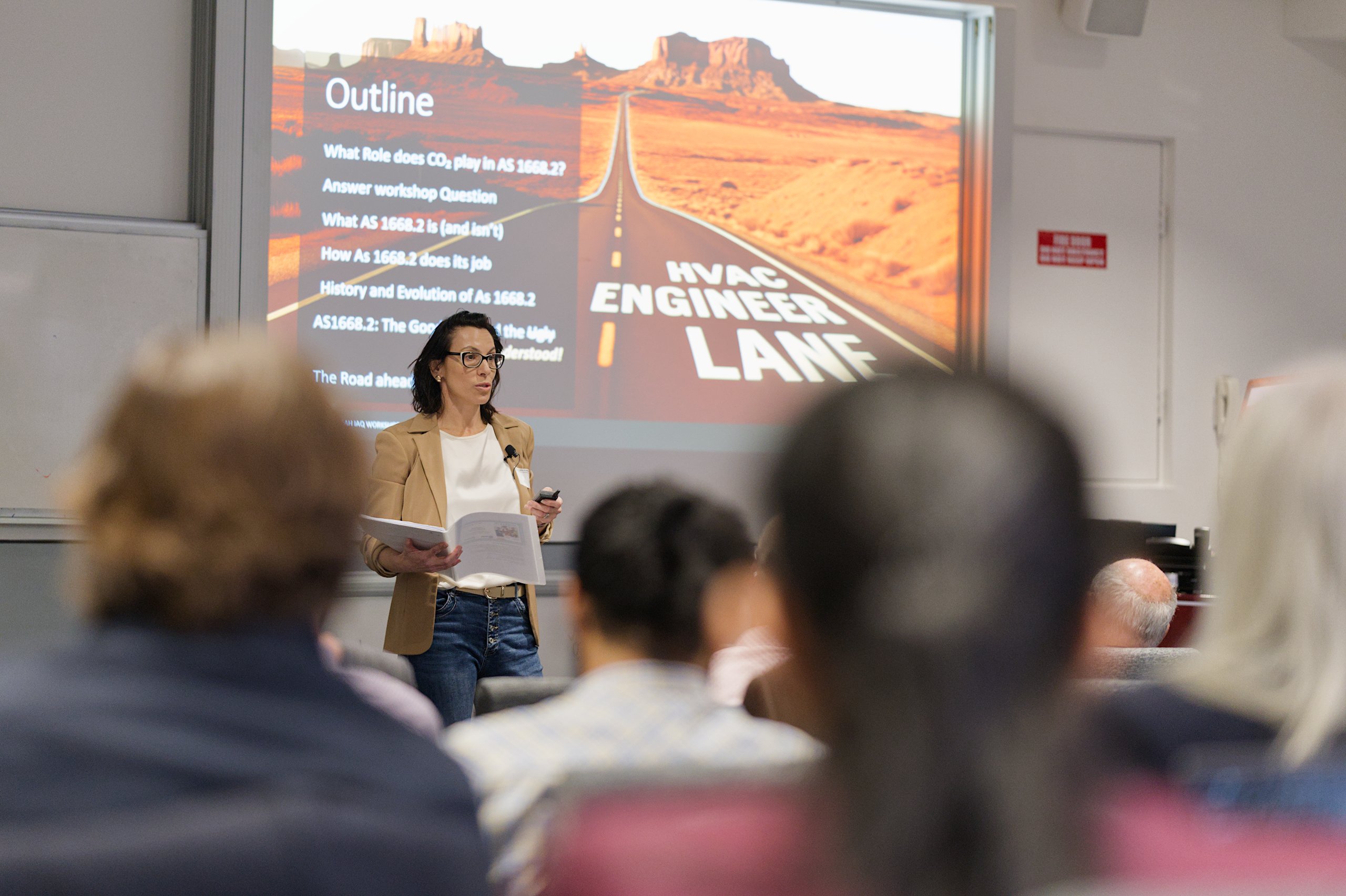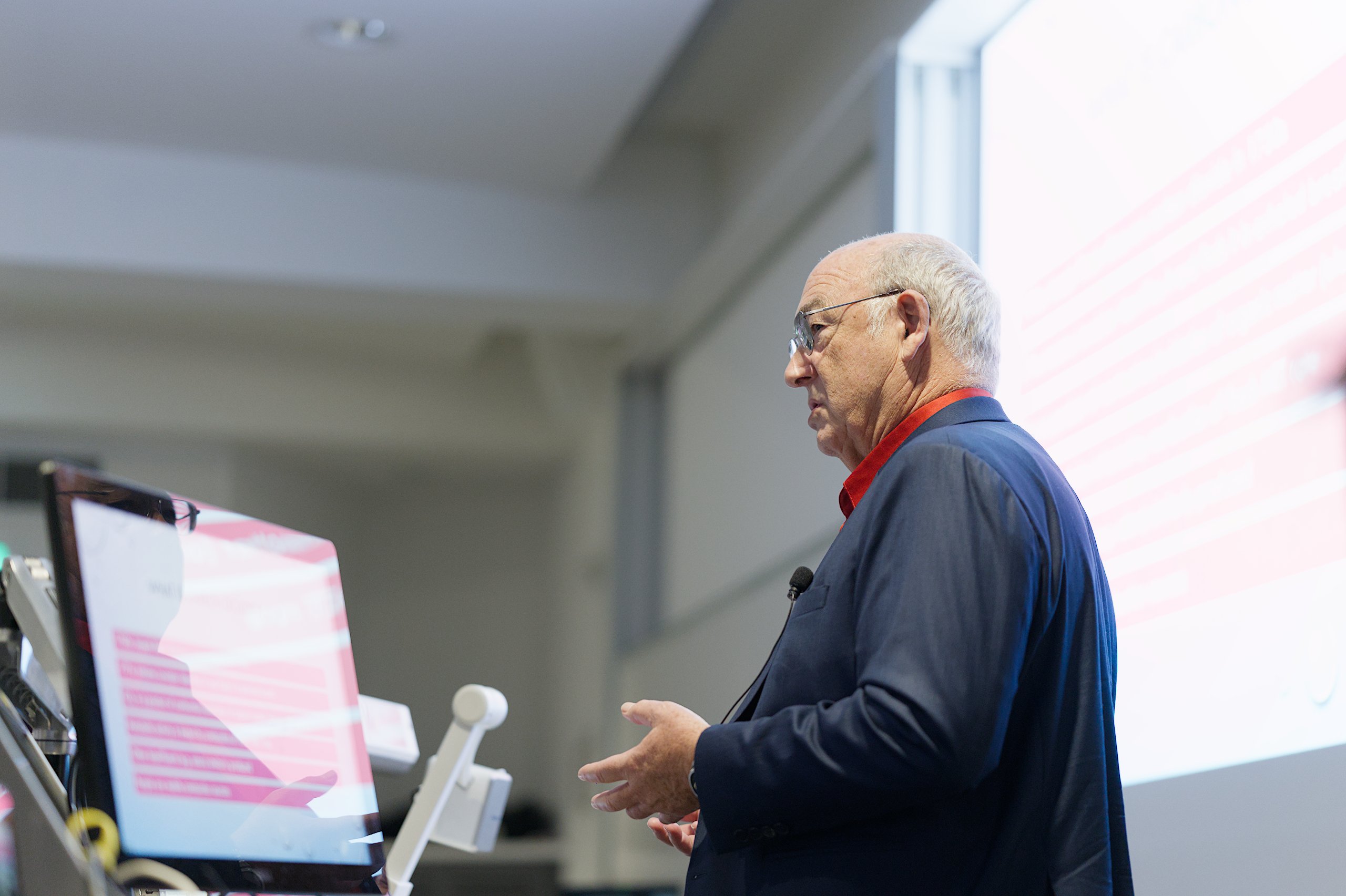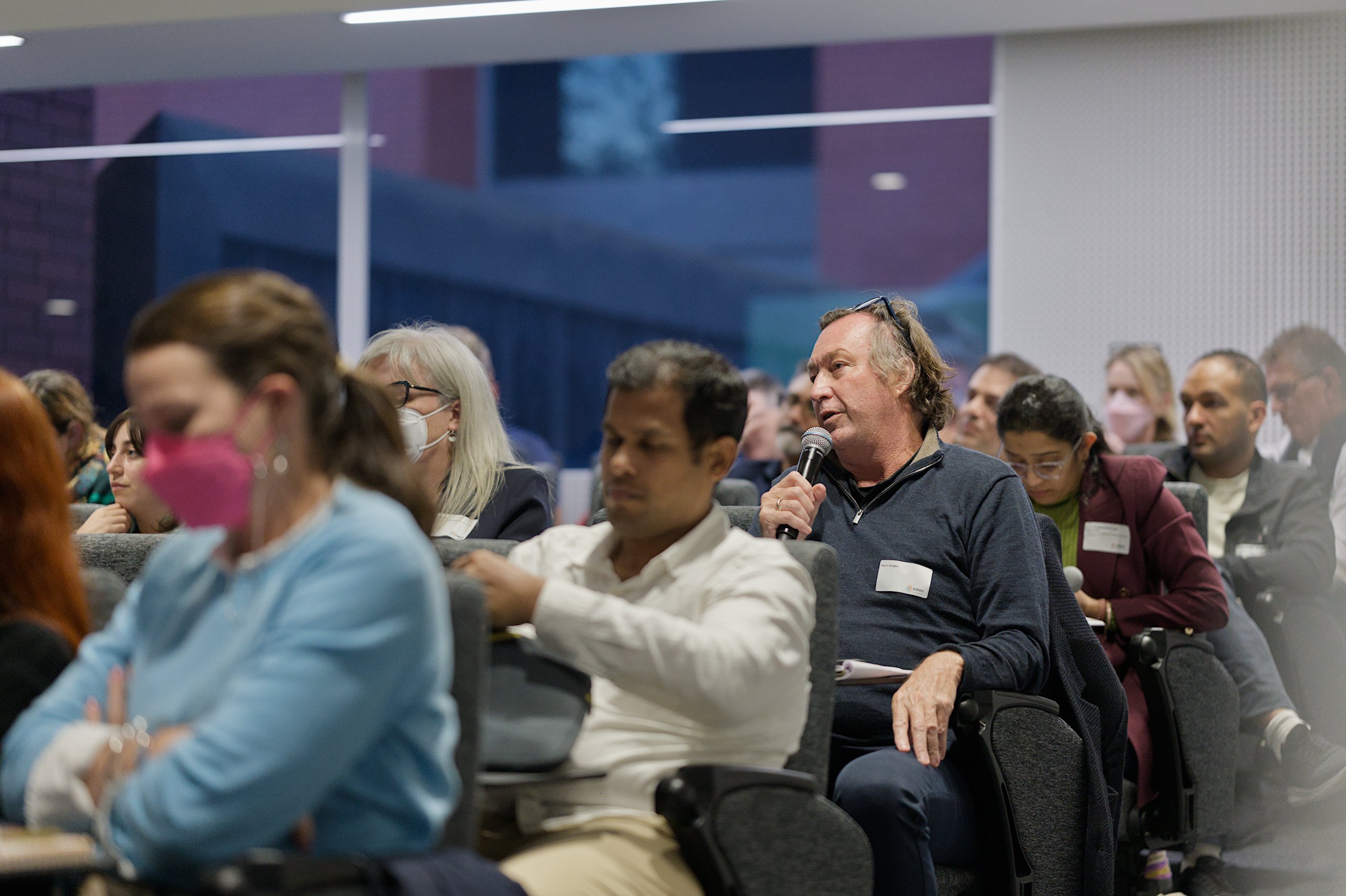Experts debate the use of CO2 as a marker for IAQ
As a special precursor to its 2025 IAQ Conference, AIRAH organised a hybrid workshop with experts from around the globe to thrash out one vital question: is setting a threshold value of 800ppm CO2 a good idea for maintaining adequate indoor air quality, or not?

The workshop, held at RMIT on Sunday, May 25, explored the differences in ventilation standards across Australia, the United States, and Europe, and interrogated whether 800ppm CO₂ – proposed as part of a blueprint for mandating indoor air quality – is truly an appropriate benchmark for indoor air quality. Hosted by Brad Prezant, Affil.AIRAH, representing AIRAH’s IAQ Special Technical Group, the event brought together experts from around the world to engage in the debate.
The case against
Dr Andrew Persily, who has been developing air quality standards for decades with organisations such as ASHRAE and the National Institute of Standards and Technology (NIST), started proceedings by laying out what he called some common misconceptions about CO₂. These include the assumption that CO₂ is a good surrogate for indoor air quality, that ASHRAE 62.1 mandates 1,000ppm of CO₂ as a measure of good IAQ, and that if CO₂ is over 1,000ppm it’s unhealthy and impairs cognition.
“If you think the CO₂ level is too high, you think the ventilation rate is too low, and that’s a different conversation.”
Dr Andrew Persily
Sonia Holzheimer, M.AIRAH, Principal Building Services Engineer at Sequal Consulting Group, then presented on the good, the bad, and the ugly misunderstood of AS 1668.2 – Australia’s standard for mechanical ventilation.


Holzheimer walked the audience through the almost 50-year history of AS 1668.2 and showed how it has treated CO₂. Of particular interest was how the scope of the standard has changed over the years, with a recent step away from taking responsibility for IAQ.
Holzheimer suggested that perhaps an AS 1668.5 could be developed to be used as a voluntary standard for IAQ. She also noted the way the standard offers opportunities for using recycled residual air, cleaned air and air from other areas of a building, instead of only outdoor air. And she stressed that in some climates – particularly where she is based in Cairns – bringing in outdoor can cause problems, rather than solving them.
Associate Professor Pawel Wargocki from the Technical University of Denmark was up next, putting the focus on “pure CO₂” – carbon dioxide as a contaminant in itself, rather than as a proxy for other issues with indoor air. Ass Prof Wargocki noted that CO₂ only becomes harmful for humans at levels over 3,000ppm, and that contrary to popular belief, there are very few studies that have shown a correlation between CO₂ levels and loss of concentration and performance.
Dr. Max Sherman, distinguished Senior Scientist at the Lawrence Berkeley National Laboratory, set out his stall with the tweaked title of his presentation: Why an 800ppm limit is silly.


Sherman argued that there is not a causal link between low CO₂ levels and good IAQ. He recommended the use of CO₂ monitoring as a surrogate for human bio-effluents, and for demand-controlled ventilation, but warned against using it to control air quality, because of the need to bring in excessive amounts of outdoor air, and the knock-on effects for energy use. He also acknowledged that high CO₂ levels could certainly highlight “scandals” with ventilation systems.
The case for
After what seemed a rising tide of arguments against using CO₂ as a marker for adequate IAQ, QUT’s Professor Lidia Morawska took centre stage and brought a different perspective. Her watchword was pragmatism.
Professor Morawska noted that having a measurement system is key in setting and promulgating standards. She pointed to research that shows 800ppm is very achievable, and that high CO₂ is favourable for pathogens. She also highlighted some short-term measures that are essential to support standards: increased awareness, large-scale surveys, and applying existing science and technology to improve IAQ.
The session then switched to Q&A format, with Jack Noonan, IWBI Vice President, APAC, joining the panel to provide the perspective of how WELL and other industry rating tools deal with IAQ.
Many of the audience questions reflected the need for urgent action on and improvement of Australia’s indoor air.


Safer Air Project founder Plum Stone pointed out that minimum standards do not take into account the very large part of the population who have chronic health conditions and who are more vulnerable to poor indoor air.
She noted that the venue had facilities for people with hearing and mobility issues, but nothing was required for IAQ. Weighing in on the debate about whether CO₂ was an accurate measure of IAQ, she pointed out that her CO₂ monitor had been beeping at the start of the session, and that as result the facility opened doors to provide extra ventilation.
Former Victorian Premier and architect Ted Baillieu AO issued a rallying call for the experts in the room to find consensus, noting that the “natural vector” of politicians is inaction.
“If we experts don’t agree, nothing is going to happen.”
Ted Baillieu AO
That consensus – or at least a path towards it – appeared to open up towards the end of the session with the concept of equivalent CO₂. This would allow for measurement of CO₂ against a threshold value that takes into account filtration and other technologies that would remove pathogens but not carbon dioxide.
While the matter was not settled, the event provided an opportunity for some of the world’s leading experts to test a way forward – and to take the conversation into the main part of AIRAH’s IAQ Conference.
PREV
NEXT
Comments
-
I’d of thought having been through the dramatic effects from Covid that the benefits of maintaining a lower co2 level as a measurement of exhaled human air containments was a no brainer. A limit of 800ppm from our testing in our monitored office environment seems to be about the right limit in my opinion to minimise the spread of air born pathogens.
-
There’s a lot of opinion voiced and documented, but no references to peer reviewed data. Without scientific based evidence there seems little reason to divert from ASHRAE published standards.
Advertisements
Recent news
- 2025 AIRAH National Awards: Ellis Air wins Excellence in HVAC – Best New Project
- AIRAH announces first round of speakers for HVAC26
- Daikin opens new Australian manufacturing facility
Latest events
- 2025 AIRAH National Awards: Ellis Air wins Excellence in HVAC – Best New Project
- AIRAH announces first round of speakers for HVAC26
- Melbourne School of Design to host ASA2025 conference
 Mark Vender
Mark Vender

Leave a Reply